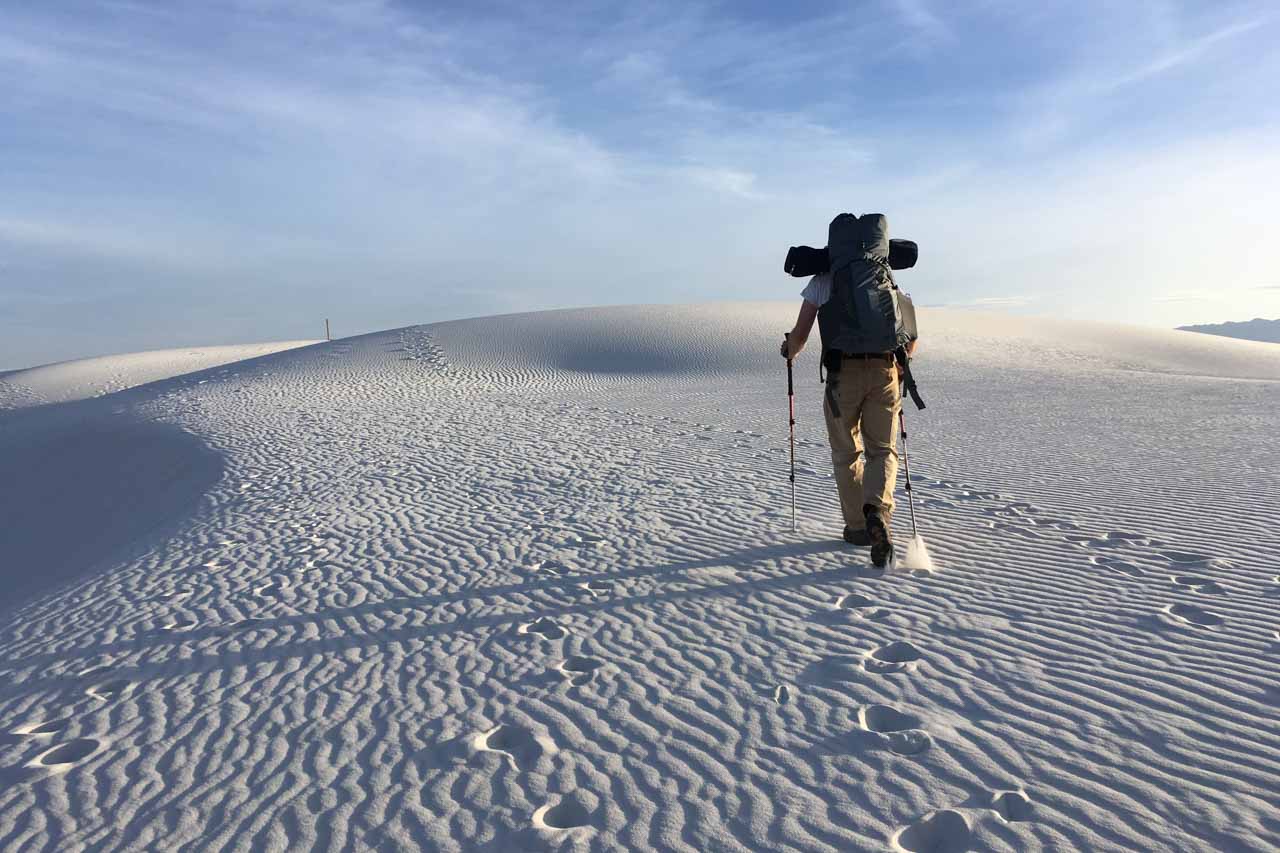On December 20, 2019, President Trump signed the 2020 National Defense Authorization Act, an act including the provision to re-designate White Sands National Monument in southern New Mexico as White Sands National Park.
This makes the park the 62nd national park in the U.S. It’s the third national park created by President Trump, after Gateway Arch National Park in 2018 and Indiana Dunes National Park in the beginning of 2019.
From National Monument to White Sands National Park
In 1933, President Hoover, using his authority under the Antiquities Act of 1906, created White Sands National Monument to protect and preserve “the white sands and additional features of scenic, scientific and educational interest.”
Now re-designated as White Sands National Park, the park features some stunning natural and cultural resources.
It’s home to the largest gypsum dunefield in the world—gypsum gives the dunes their magnificent whiteness—as well the largest collection of fossilized Ice Age footprints on Earth. It also contains numerous traces of 10,000 years of human presence in the area, including unique gypsum hearth mounds.
The scintillating white dunes of White Sands National Park have attracted visitors for decades. People visit to enjoy outdoor activities like cycling, hiking, camping and sand sledding (similar to Great Sand Dunes National Park).

U.S. Army & National Park Service Land Exchange
The December 20, 2019 National Defense Authorization Act includes the transfer of land from and to the White Sands Missile Range, which completely surrounds the park. This U.S. Army military weapons testing site was the location of the first atomic bomb detonation and is still very much in use today.
The re-designation of White Sands National Monument to White Sands National Park comes with a land exchange between the U.S. Army and National Park Service.
2,826 acres of land within the national monument’s former boundaries is donated to the army, while the National Park Service get 5,766 acres of former army land. This is a net gain of 2,940 acres for White Sands National Park.
The land exchange also means that visitors won’t have to deal with temporary closures during weapons tests anymore, which usually take place once or twice a week.
Unlike Gateway Arch National Park, whose re-designation as a national park I’m a strong critic of, I wholeheartedly welcome the addition of White Sands National Park. This brings the total number of U.S. national parks to 62.
This is one of the country’s most extraordinary landscapes—one of many—and it deserves the recognition it’s getting now.

